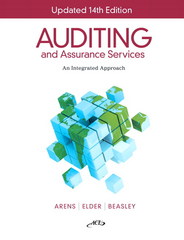Question
13. On January 1, 2010, Plueger Company has $700,000 of 6%, 10-year bonds with an unamortized discount of $28,000. Steiner Company, an 80% subsidiary, purchased
13. On January 1, 2010, Plueger Company has $700,000 of 6%, 10-year bonds with an unamortized discount of $28,000. Steiner Company, an 80% subsidiary, purchased $350,000 of these bonds at 102. The gain or (loss) on the retirement of Pluegers bonds is: a. $14,000 loss. b. $14,000 gain. c. $21,000 loss. d. $21,000 gain.
14. On a consolidated balance sheet, subsidiary preferred stock will be shown: a. as part of consolidated stockholders equity. b. combined with any preferred stock of the parent. c. as part of the noncontrolling interest amount to the extent such balance represents preferred stock held by the parent. d. as part of the noncontrolling interest amount to the extent such balance represents preferred stock held by outside interests.
15. Average exchange rates are used to translate certain items from foreign financial statements into U.S. dollars. Such averages are used in order to: a. smooth out large translation gains and losses. b. eliminate temporary fluctuation in exchange rates that may be reversed in the next fiscal period. c. avoid using different exchange rates for some revenue and expense accounts. d. approximate the exchange rate in effect when the items were recognized.
16. When the functional currency is identified as the U.S. dollar, land purchased by a foreign subsidiary after the controlling interest was acquired by the parent company should be translated using the: a. historical rate in effect when the land was purchased. b. current rate in effect at the balance sheet date. c. forward rate. d. average exchange rate for the current period.
17. The appropriate exchange rate for translating a plant asset in the balance sheet of a foreign subsidiary in which the functional currency is the U.S. dollar is the: a. current exchange rate. b. average exchange rate for the current year. c. historical exchange rate in effect when the plant asset was acquired or the date of acquisition, whichever is later. d. forward rate.
Step by Step Solution
There are 3 Steps involved in it
Step: 1

Get Instant Access to Expert-Tailored Solutions
See step-by-step solutions with expert insights and AI powered tools for academic success
Step: 2

Step: 3

Ace Your Homework with AI
Get the answers you need in no time with our AI-driven, step-by-step assistance
Get Started


